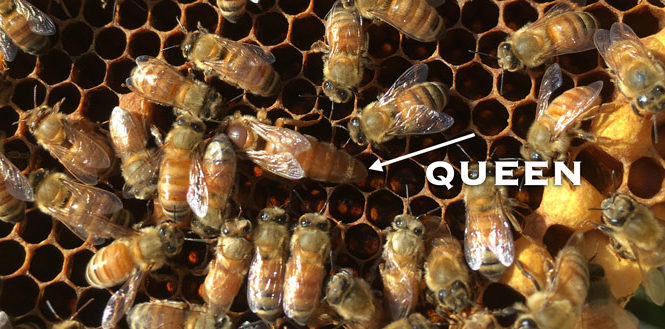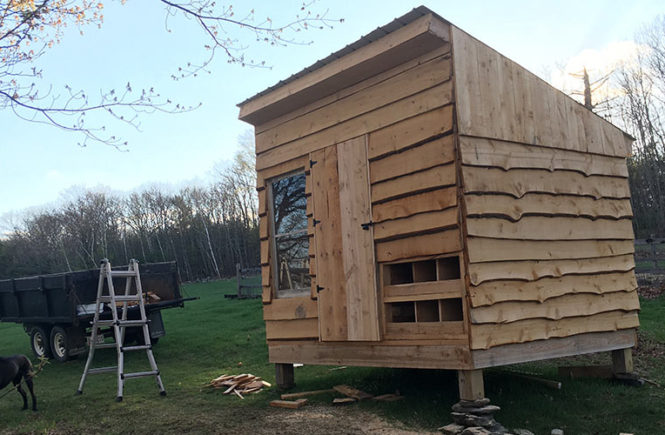2016 was a tough year for bees in Maine – the drought during the summer caused a nectar dirth, and many colonies headed into winter weaker than normal. During my last fall inspection, I knew that I had one production hive that was very small, and it was doubtful they would be able to keep a warm enough cluster to outlast winter if it was too cold and long.
Bees start winter in the bottom of their hive, and cluster to stay warm. They do still eat, and as they eat what they’ve stored, they gradually move up the hive. Since winters are long in Maine, we make sugar boards to place on top of the hive, and install them in late November/early December. If the cluster eats their way up to the top, there’s 25 lbs of hardened sugar waiting for them, to help them make it through to spring.
It was a group effort this past fall, with my beekeeping friends, to mix and assemble all the boards we’d need for everyone’s hives. This required the boards, A LOT of bags of sugar, and was made faster by a mini cement mixer. (as we expand our own apiary, one of these will definitely be on my future purchase list)
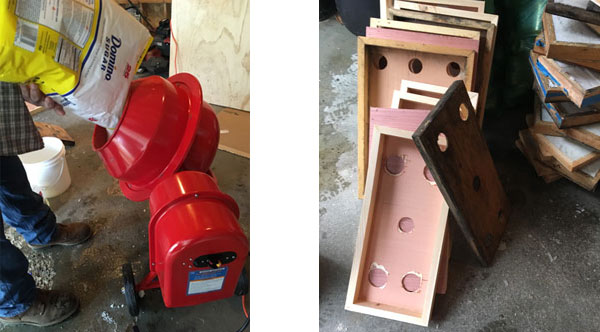
The sugar is mixed with 1 tbl of water to 1 lb of sugar, until its about the consistency of beach sand. Once placed in the boards, the sugar dries hard as rock, and won’t fall through the access holes (but you do need to leave one open in the middle to help with circulation in the hive). I’ve learned in my short two years keeping bees, that each beekeeper is very particular in their methods. Some put the boards on the hive, sugar side down. My mentor prefers drilling all the extra holes, and placing it sugar side up. The holes allow the bees to access it no matter where they come up in the hive (bees won’t travel left/right if its too cold to break their cluster, so they could have plenty of food 2 frames over, and still starve). And, in early spring, as the temps warm up, if the sugar becomes soft, keeping the wood side down prevents the sugar from falling down through the hive.
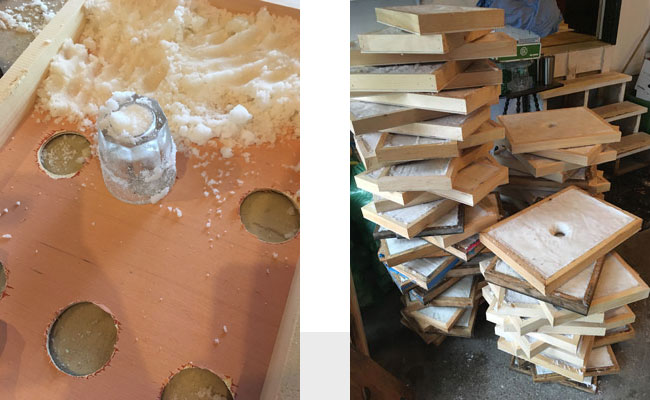
The weather was warm enough to check the hives at the end of December, and unfortunately, the weak hive I was worried about, had died. In late January, there was a day warm enough to peak under the covers, and some of the hives were just starting to eat their candy board. Unfortunately, later in February, after several storms, when I was able to check them again, only one of my nuc colonies had survived. All through March, I peaked at the candy board, monitoring what they ate, and adding cubes of sugar to the candy board as needed.
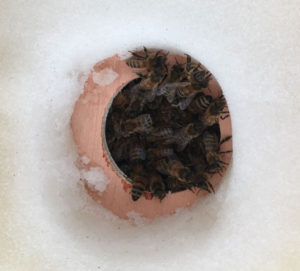
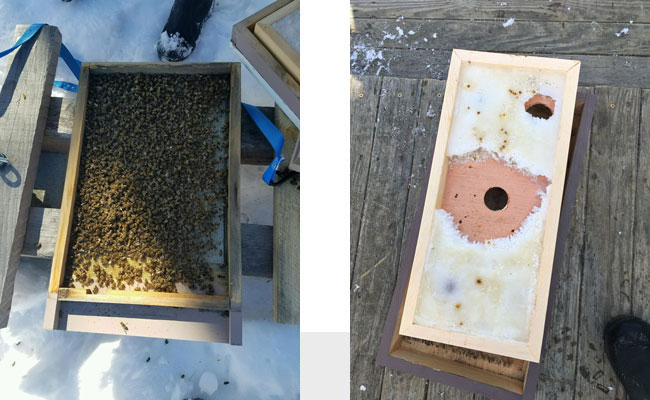
Its mid-April, as I write this – the weather has broke, the candy board is off, and I was able to add on a box of pollen & honey (extra stores from the hives that didn’t make it). There’s not a lot of bees left, but the Queen has started to lay again — so fingers crossed they’ll continue to pull through, and can turn into a booming hive later this spring.


